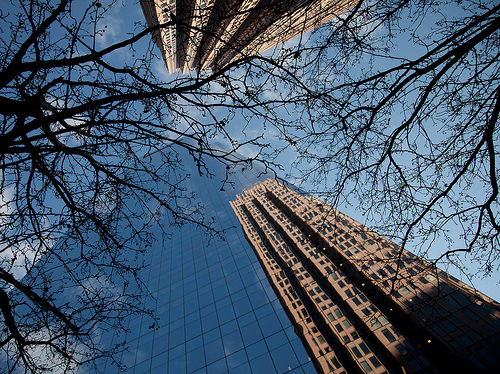 PhillyTreeMap helps Philadelphia’s urban forest grow.Photo: Danny FowlerTrees do a lot for cities. They soften hard, lifeless spaces with a bit of green, reduce the urban heat island, scrub pollutants, filter dust and dirt from the air, and more. They are, in other words, an incredibly valuable resource, and one we should be keeping a close eye on.
PhillyTreeMap helps Philadelphia’s urban forest grow.Photo: Danny FowlerTrees do a lot for cities. They soften hard, lifeless spaces with a bit of green, reduce the urban heat island, scrub pollutants, filter dust and dirt from the air, and more. They are, in other words, an incredibly valuable resource, and one we should be keeping a close eye on.
But cataloguing the trees within a city — tens or even hundreds of thousands of them — can be a gargantuan and expensive undertaking. Enter PhillyTreeMap.
PhillyTreeMap is a web mapping application that solicits citizen input, similar to the successful OpenStreetMap. Robert Cheetham started the project two years ago when he won a government grant for the idea. Since then, PhillyTreeMap has grown to encompass a database of over 144,000 Philadelphia trees and an open source code base which Cheetham and his company, Azavea, are making freely available to other cities. From Philly.com:
“Before this, people were kind of doing [tree counts] on their own, and there wasn’t a central mechanism for them to be in one place,” says Patrick Morgan, Philadelphia Parks and Recreation spokesman. “This is a great tool for people to see how their contributions will, over time, help the urban forest grow, which I think is pretty cool.”
Crowd-sourced geotagged information is all the rage these days, with people submitting tips, opinions, and complaints on everything from graffiti to potholes. PhillyTreeMap not only allows people to site trees on a map, helping street crews and parks that maintain them. Users can also report the condition of specific trees, helping save resources by letting city crews focus on the trees that need the most care.
PhillyTreeMap lets people map not only street trees, but also those on private property — the big old oak in the backyard or the walnut in the neighbor’s garden. This broader picture of the urban forest will allow planners to direct tree-planting efforts where green cover is needed most. For example, Philadelphia is about 20 percent vegetated, though about half of the city can support trees, Morgan said. The database can help him and his crews identify the remaining 30 percent and focus on planting there. PhillyTreeMap can also help the city keep up to date on progress towards achieving the mayor’s “GreenPlan” of 300,000 trees by 2015.
But don’t count on the database surviving an audit just yet. One of PhillyTreeMap’s main hurdles is ensuring its data is accurate. All crowd-sourced websites have to deal with this — think Wikipedia’s problems with vandalism, or Yelp’s issues with astroturfing. Cheetham says one of his next steps will be adding some form of editorial hierarchy, where people who consistently add quality data are rewarded with greater oversight. He also envisions a sort of “check-in” system similar to that on Yelp where people can report that they’ve watered a certain tree on such and such a date.
Though Cheetham released the source code just last month, he hopes other cities will implement the software soon, and start making their own streets greener.



